New California AB-38 Fire Disclosure
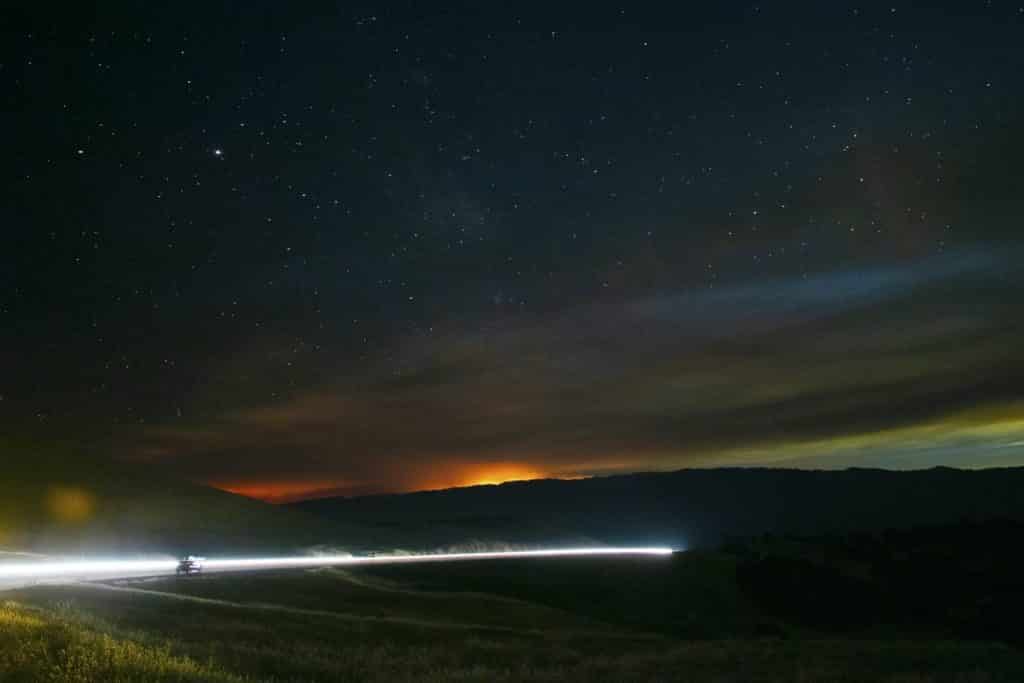
Have you heard about the new California AB-38 fire disclosure? On and after July 1, 2021, when you sell property that is located in a high or very high fire hazard severity zone you’ll need documentation with an L.A defensible space inspection that complies with Section 4291 of the Public Resources Code or local vegetation management ordinances (check with your local fire department). This new seller disclosure will pop up on your Natural Hazard Disclosure (NHD) report as an AB-38 Notice. In this article, I examine the AB-38 defensible space disclosure for homes in a very high fire hazard severity zone, outline the new California AB-38 defensible space fire disclosure, Los Angeles defensible space inspection, the L.A defensible space inspection compliance certification. What is AB-38? Please continue reading to find out!
L.A County Homeowners!
Do You Have AB-38 Defensible Space Questions?
Give me a call at (310) 231-6544
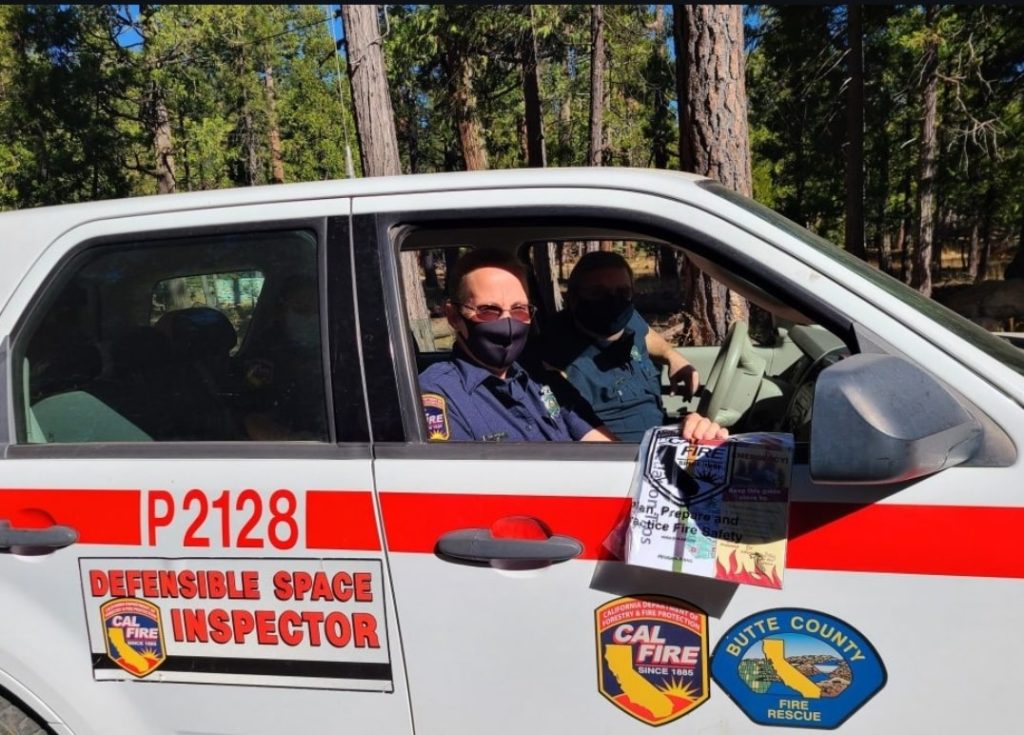
The new California AB-38 fire disclosure establishes that, as of July 1, 2021, California Civil Code Section 1102.19 requires a seller of real property located in a high or very high fire hazard severity zone to provide the buyer with documentation stating the property is in compliance with defensible space requirements. The law allows, that if documentation demonstrating compliance cannot be obtained by the close of escrow, the seller and buyer can enter into a written agreement showing that the buyer agrees to obtain documentation of compliance within one year of the close of escrow.
L.A Defensible Space Inspection
While most of California is subject to some degree of fire hazard, there are specific features that make some areas more hazardous. The California Department of Forestry and Fire Protection (CAL FIRE) is required by law to map areas of significant fire hazards based on fuels, terrain, local weather, and other relevant factors. These designations – referred to as Fire Hazard Severity Zones (FHSZ) – mandate how people construct buildings and protect property to reduce risk associated with wildland fires. The Fire Hazard Severity Zone maps denote lands of similar hazards where the state has financial responsibility for wildland fire protection, known as State Responsibility Area or SRA. By law, only lands zoned as Very High Fire Hazard Severity are identified within areas of California where local governments have financial responsibility for wildland fire protection, known as Local Responsibility Area or LRA.
L.A County Homeowners!
Do You Have Los Angeles Defensible Space Questions?
Give me a call at (310) 231-6544
Defensible space, coupled with home hardening, is essential to improve your home’s chance of surviving a wildfire. Defensible space is the buffer you create between a building on your property and the grass, trees, shrubs, or any wildland area that surround it. This space is needed to slow or stop the spread of wildfire and it helps protect your home from catching fire—either from embers, direct flame contact, or radiant heat. Proper defensible space also provides firefighters a safe area to work in, to defend your home.
The Los Angeles County Fire Department Forestry Division Fuel Modification Unit is responsible for the approval of a landscape plan for structures located in the Fire Hazard Severity Zones. The process of approval consists of reviewing aspects such as structure location and type of construction, topography, slope, amount and arrangement of vegetation and overall site settings. Our objective through this approval plan process is to create defensible space necessary for effective fire protection of homes in the Fire Hazard Severity Zones.
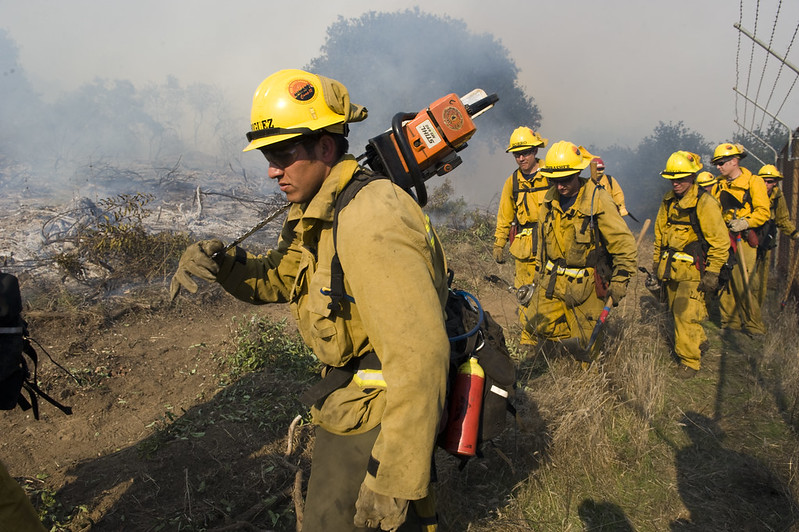
What is AB-38?
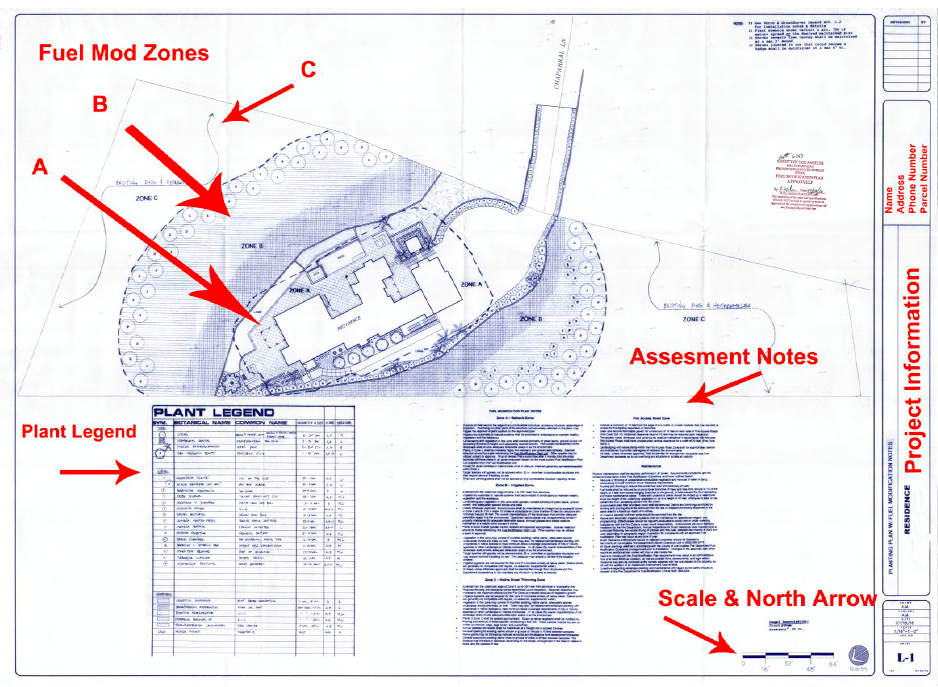
The Fuel Modification plan consists of Zones A, B, and C. These zones are drawn as concentric circles around each structure extending to the property line. Zone A extends from the outer edge of the structure or appendage to 30 feet. Zone B extends from the edge of Zone A to 100 feet from the structure. Zone C extends from the edge of Zone B to 200 feet from the structure, or to the property line.
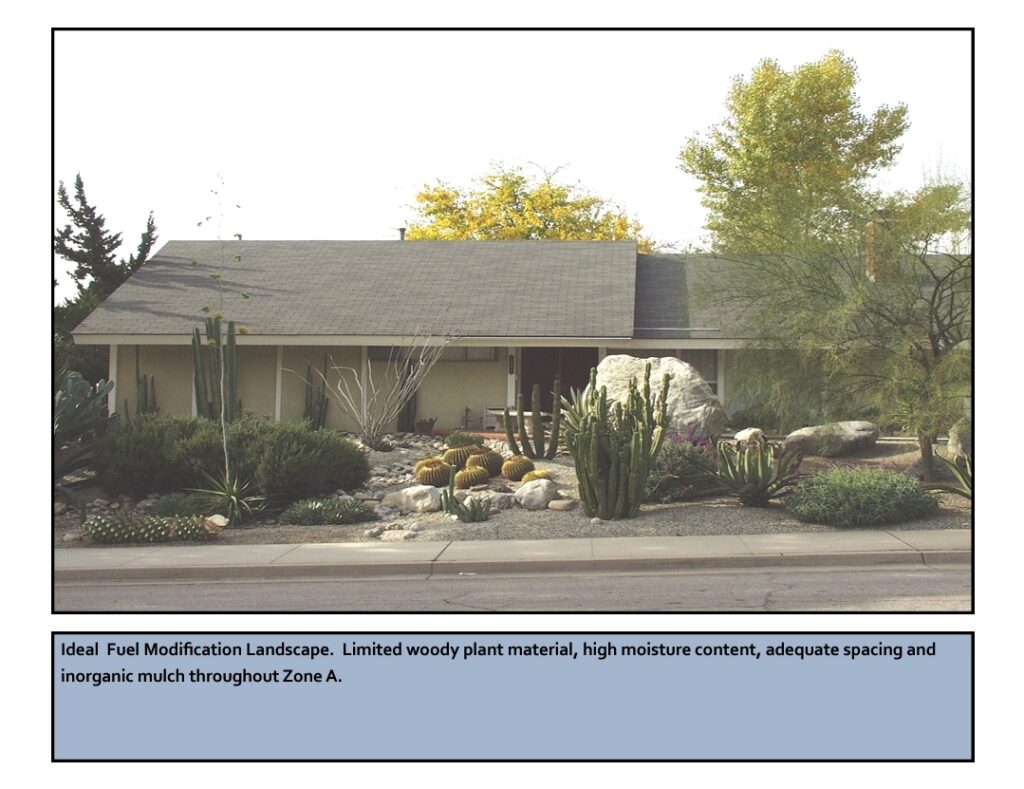
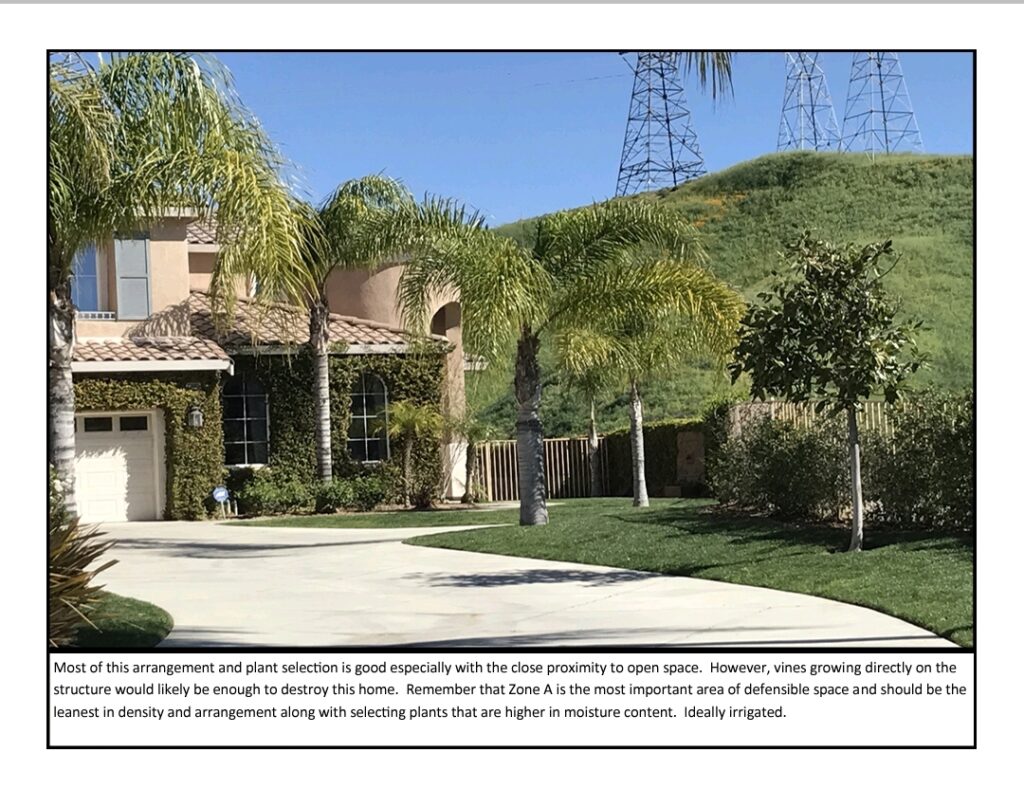
Los Angeles Defensible Space
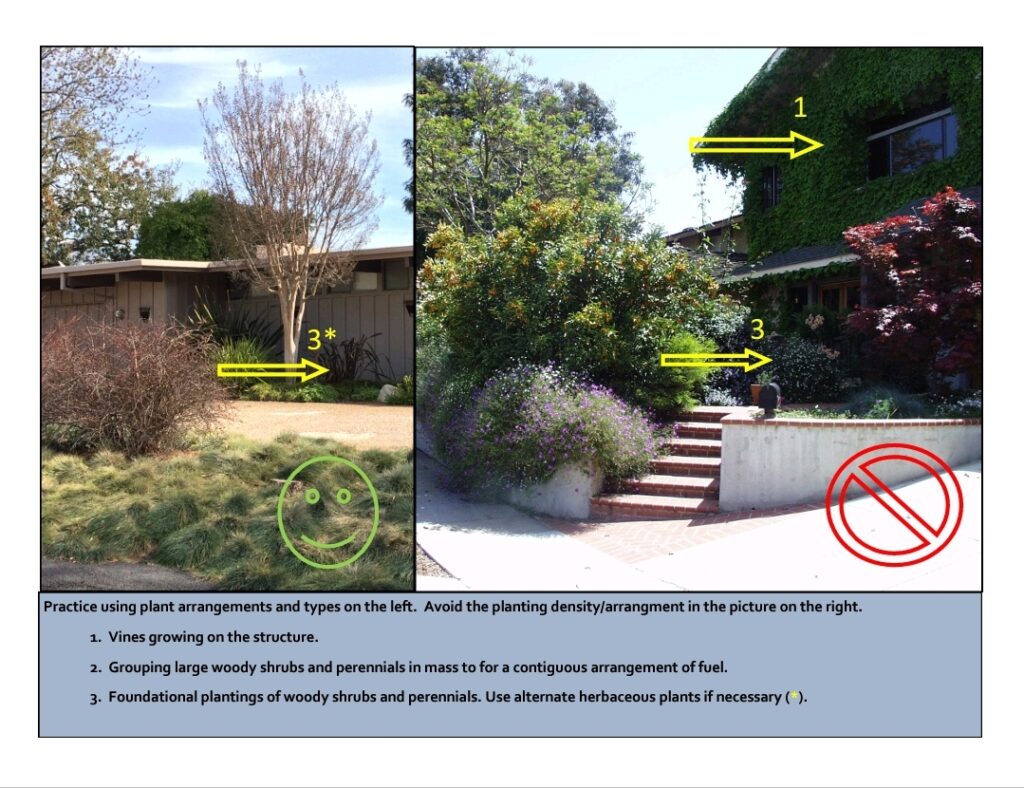
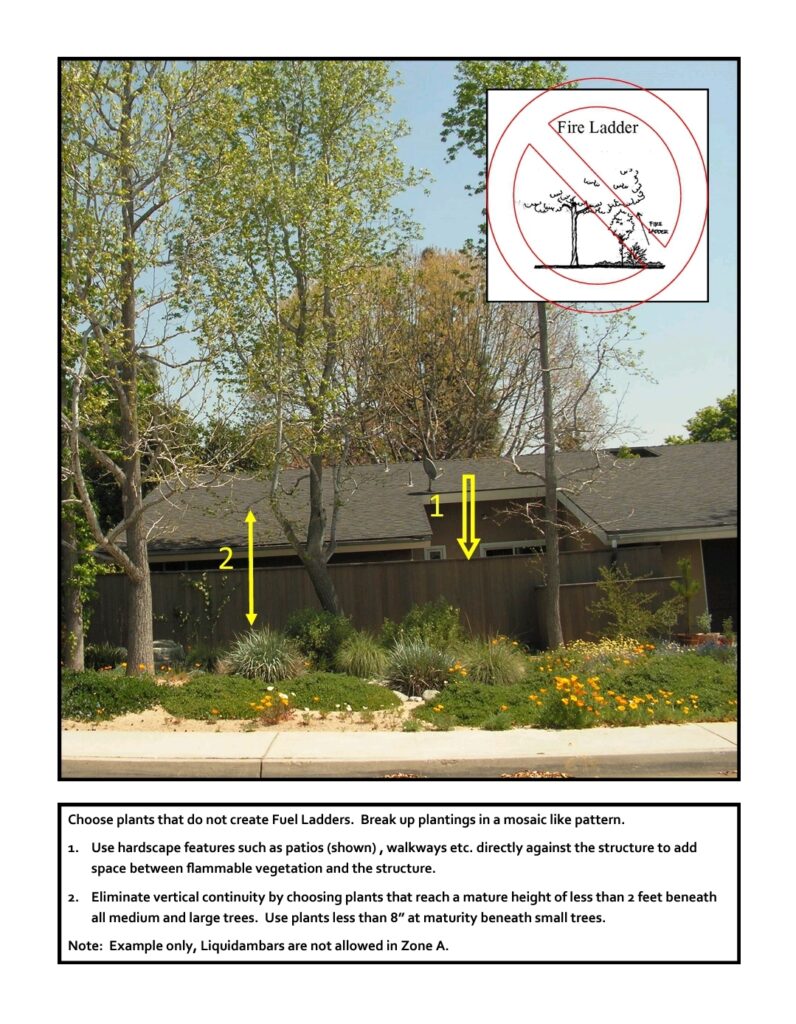
New L.A Defensible Space Inspection Requirements
The state of California has seen an increase in frequency and size of wild fires, including historic brushfires in the city of Los Angeles such as the La Tuna, Creek, and Skirball fires. Additionally, smaller brushfires have been accidentally started by well intentioned residents performing brush clearance. Therefore, Los Angeles City Council has approved an ordinance to increase requirements for brush clearance and fire safety in the Very High Fire Hazard Severity Zones (VHFHSZ). This ordinance establishes appropriate safety measures necessary to mitigate the occurrence of such fires.
Highlights of the new ordinance include:
- Use of metal cutting blades for grass or brush clearance shall be limited to those which are non-ferrous/non-sparking.
- Brush clearance cannot be done on red flag days, when fire weather conditions are at their peak.
- Individuals engaged in brush clearance operations shall not engage in any other activities during their actual clearance of grass or brush.
- An approved fire extinguisher, or a pressurized garden hose with attached nozzle shall be within 10 feet of any grass or brush clearance operation, to quickly extinguish a small fire before it burns out of control.
- A cell phone capable of dialing 9-1-1 shall be charged and readily accessible to the grass or brush clearance operation.
Read the full Ordinance here. It is effective now.
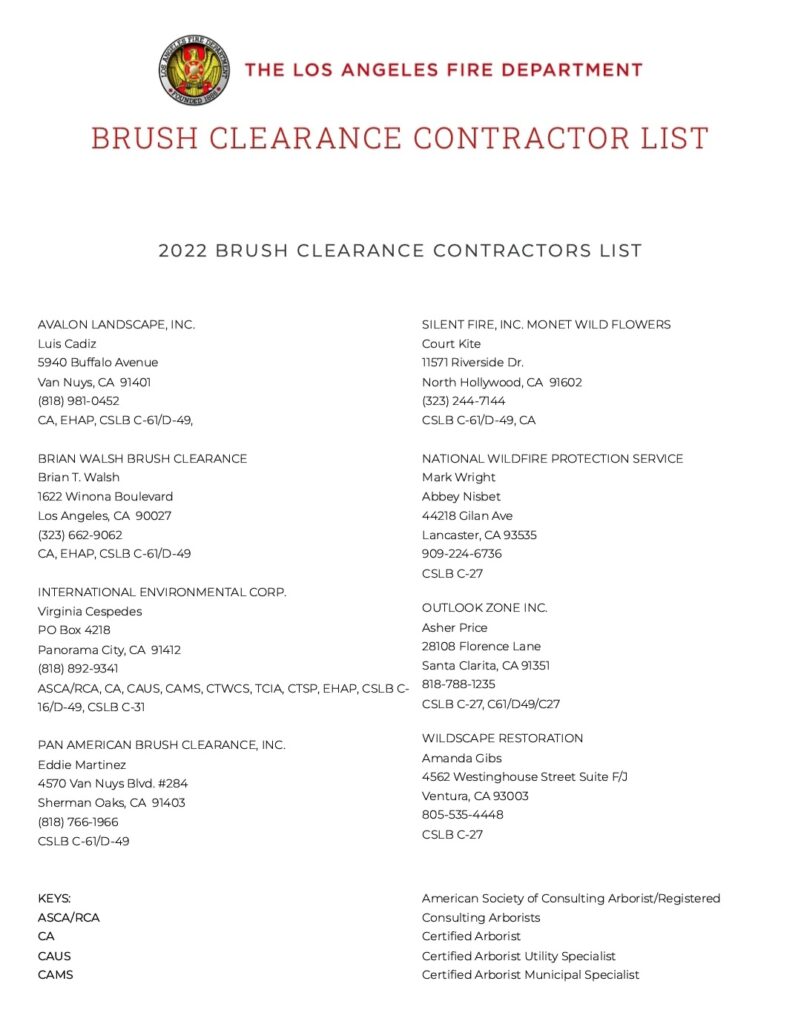
New California AB-38 Fire Disclosure
1. Areas within 200 feet of structures and/or 10 feet of roadside surfaces or combustible fence: Grass shall be cut to three inches in height. Native brush shall be reduced in quantity to three inches in height. This does not apply to individual native shrubs spaced a minimum of 18 feet apart, provided such shrubs are trimmed up from the ground to 1/3 of their height with all dead material being removed (see diagram below).
2. For trees taller than 18 feet, trim lower branches so no foliage is within six feet of the ground, and remove all dead material. For trees and shrubs less than 18 feet, remove lower branches to 1/3 of their height, and remove all dead material (see diagram below).
3. Trees shall be trimmed up so the foliage is no closer than 10 feet from the outlet of a chimney (see diagram below).
4. All roof surfaces shall be maintained free of substantial accumulation of leaves, needles, twigs and any other combustible matter. Maintain five feet of vertical clearance between roof surfaces and portions of overhanging trees (see diagram below).
5. All cut vegetation and debris shall be removed in a legal manner. Cut vegetation may be machine processed (i.e.,chipped) and spread back onto the property at a depth not to exceed three inches within 30 feet of structures and six inches beyond 30 feet of structures. In addition, spread material shall not be placed within 10 feet of any usable roadside (in accordance with Fire Prevention Bureau Procedure No. 25)
The above general requirements also apply to landscape vegetation.
All fire clearance shall be performed to comply with LAMC 46.00-46.06, relative to Native Protected Trees and Shrubs.
To Review ALL Enforceable Brush Clearance requirements, visit VMS3.lafd.org “Clearance Requirement.”
VEGETATION MANAGEMENT IS A YEAR-ROUND RESPONSIBILITY
Clear Early, Clear Often.
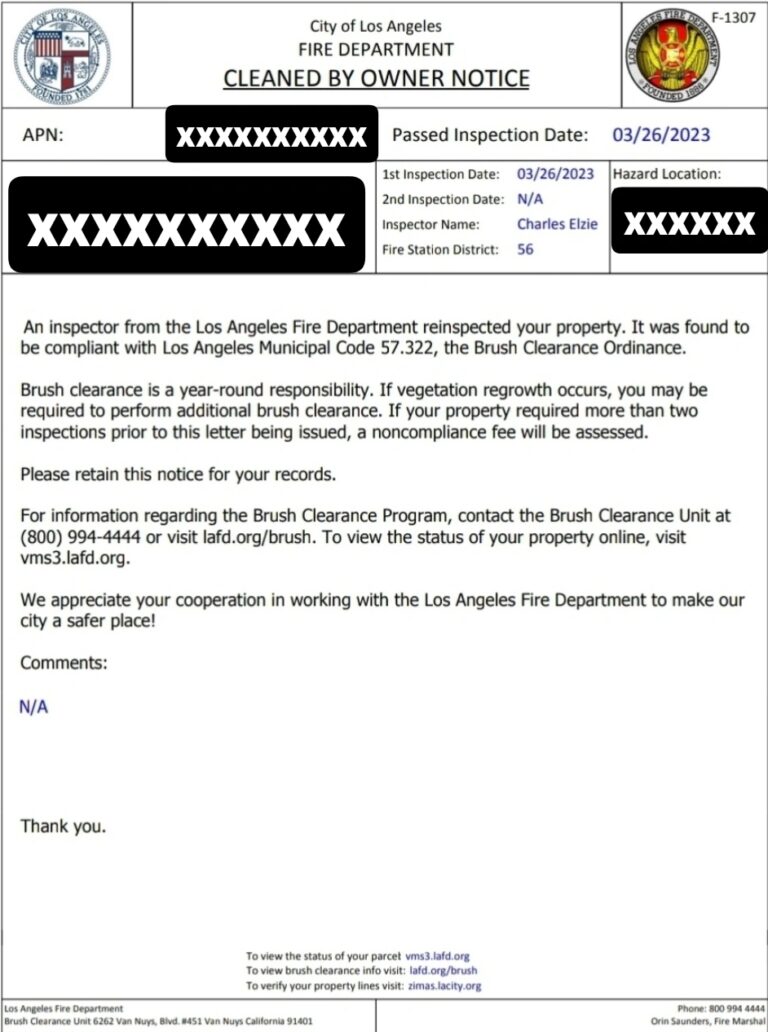
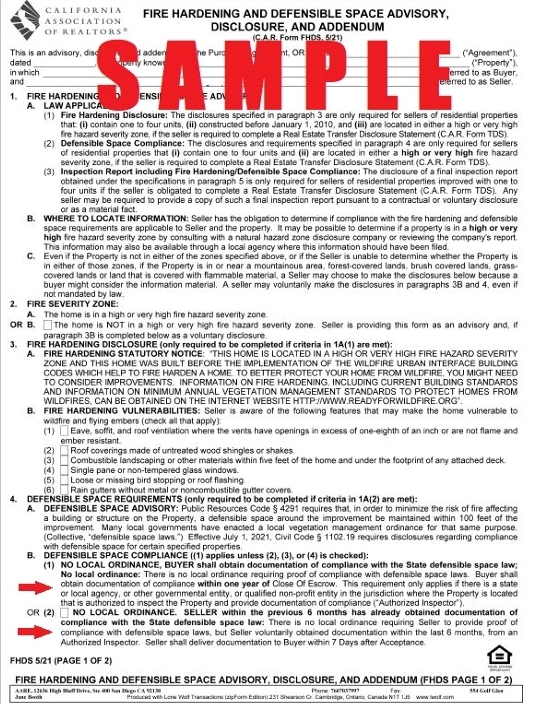

Meet Your New Real Estate Agent
My passion for California history, writing, architectural preservation, and extensive sales background drew me into becoming a residential real estate advisor. I am a property systems expert and specialize in historic properties. My focus is on the thorough research of your home using an array of databases and tools. I uncover the archival facts to build your homes’ story, going beyond the system checks, marketing, photography and staging, and into the spirit of your home, setting a price that attracts the attention to create multiple offers of interest to optimize your return. Recently I represented a record breaking sale for the most expensive home ever sold in Echo Park at 744 Sq. Ft. On the buying side, I know the terrain, from immediately developing rapport with the listing side to represent you in the best light and get a closer understanding to what the sellers want, so that I may negotiate the terms which keep more money in your pocket. I know the emerging markets, geographic pockets where the hidden gems lay, and where to look for hidden value based on your purchasing power and interests. I hold multiple certifications and continue to empower our clients with this knowledge, helping them get closer to building wealth and financial independence.